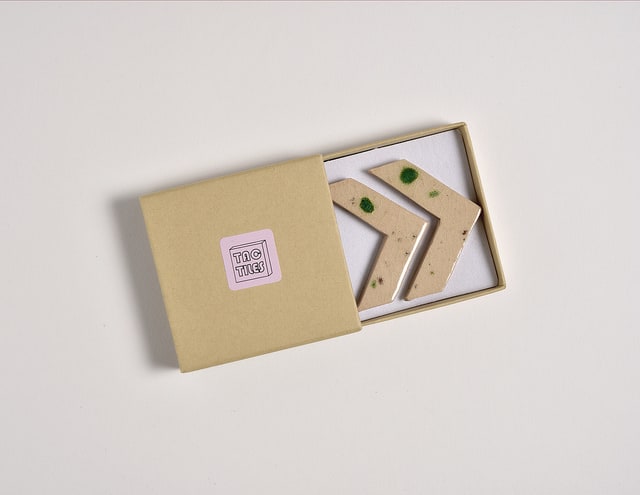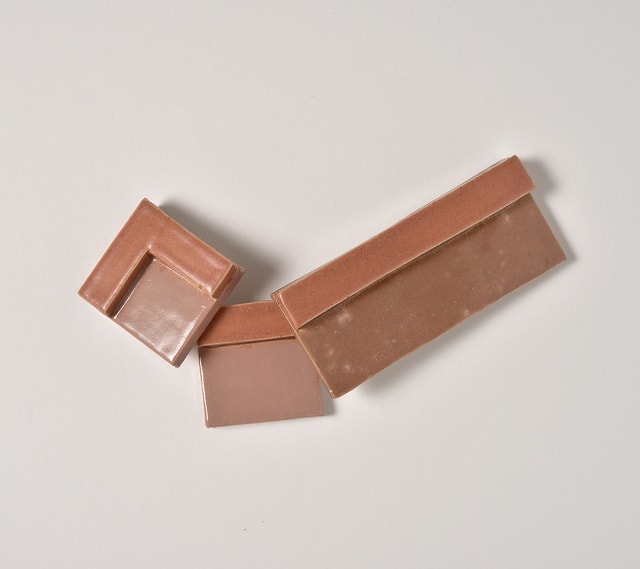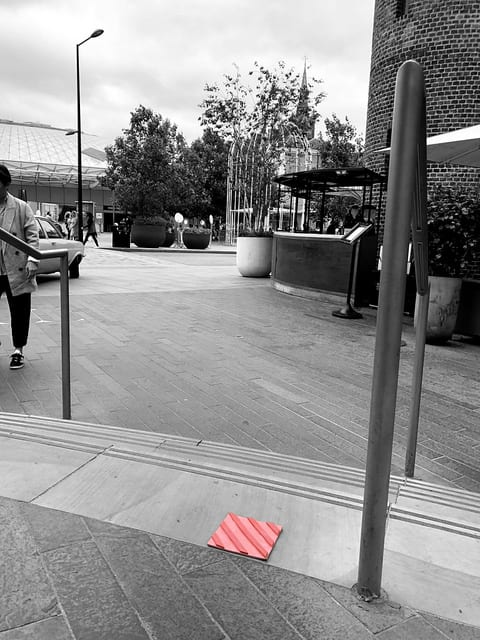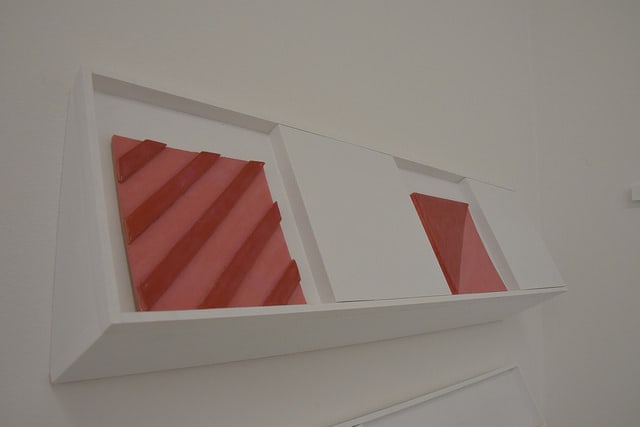As part of our Life At Chelsea series we talked to MA Interior and Spatial Design alumna Manon Jayet to find out more about how her learning experience at Chelsea shaped her practice.

“During my studies before Chelsea I was mostly focusing on the technical aspects of Interior Design, which was mostly about drawing up floorplans, sections and 3D drawings. Whilst doing MA Interior and Spatial Design at Chelsea I learned how to take a more creative approach, by discovering all kinds of new developing methods such as ceramics.

“My research project started with an interest in all floor-based life, which has ultimately led me to a wayfinding aid for visually impaired people, haptic paving. As I started to look more into this matter, I decided I wanted to have my own take on this by developing a new kind of wayfinding aid, which are called ‘tac-tiles’. Their main aim is to provide an effective, yet fun and colourful form of wayfinding for visually impaired and sighted people. They will also bring some more tactility to the cities of today.

“I feel like being fairly new to London and just walking around the city has been one of the biggest influences on my work. As one of the first stages of my research consisted of just walking around the city to have a look at how people walk and whether this was related to the floor(ing) or not. It was also by doing this that I noticed the haptic paving that’s been installed throughout the city. I started talking to one of our tutors, Aaron McPeake, who gave me some insights on how it is to be partially sighted in such a big city such as London.

“The ceramics workshop was very useful during my project, as I experimented with my ‘tac-tiles’ there over the last few months of the course. I also used the wood workshop several times to make some supporting work for my tac-tiles, such as shelves.


“I would say that the two people who were closest to my work during this year, were my own tutor course leader Amritt Flora and lecturer Aaron McPeake. Ceramics workshop technicians Darren and Amy helped me patiently as a beginner with ceramics.
“I plan to stay in London for some time after my MA to gain some more experience in interior design and architecture offices, as I feel like this would be the perfect place to launch my career.


“For new students on MA Interior and Spatial Design, I recommend being open to everything. Don’t think too much at the beginning of the course about what it is what you want to end up with at the end of the year. I discovered that for me personally, it was actually best to have no idea what my project might be at the end, as it kept me open minded.
“I really enjoy the diversity at Chelsea! Everyone’s so different, coming from different backgrounds.
“My Chelsea in three words? Interesting, Peculiar and Challenging”
Find out more about MA Interior and Spatial Design
Look back at the MA Summer Show 2018 on chelseadegreeshow.com

